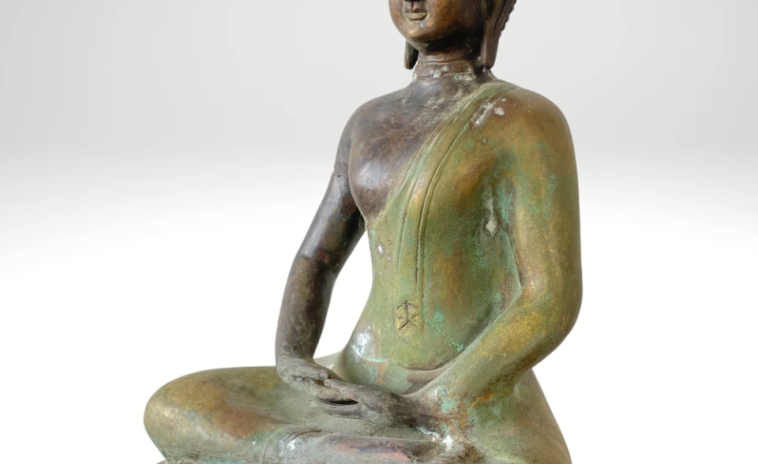The Timeless Artistry and Spiritual Significance of Early Buddha Statues and the Thai Buddha Statue

Throughout centuries, Buddhist art has served not only as a medium for spiritual expression but also as a cultural bridge that connects diverse regions, ideologies, and historical narratives. Among the most enduring and powerful symbols of Buddhist tradition are the Early Buddha Statues and the iconic Thai Buddha Statue. These sculptures embody deep spiritual meaning, cultural history, and artistic mastery that transcend geographical boundaries and religious practices.
The Origins and Evolution of Early Buddha Statues
The history of Early Buddha Statues is deeply rooted in the emergence of Buddhism as a transformative philosophical and spiritual movement in ancient India around the 6th to 4th century BCE. Interestingly, for several centuries after the death of Siddhartha Gautama—the historical Buddha—Buddhist art deliberately avoided human depictions of him. Instead, artists represented the Buddha through symbols like the Bodhi tree, footprints, the Dharma wheel, and the empty throne.
It was not until the 1st century CE that artists in the regions of Gandhara (modern-day Pakistan and Afghanistan) and Mathura (India) began sculpting the human form of Buddha. These Early Buddha Statues are remarkable not only for their religious symbolism but also for their stylistic diversity. Gandharan statues, influenced by Greco-Roman art, featured realistic anatomy, wavy hair, and detailed robes. In contrast, the Mathura style emphasized spiritual power and inner calm, portrayed through bold forms and symbolic gestures known as mudras.
These early depictions set the foundation for how Buddha would be represented throughout Asia. The influence of Early Buddha Statues can still be seen in Buddhist sculpture across the globe—from Japan to Indonesia, and Tibet to Thailand.
The Cultural Brilliance of the Thai Buddha Statue
The Thai Buddha Statue is among the most distinctive and revered in Buddhist art. Rooted in a blend of indigenous traditions and foreign artistic influences, these statues reflect the profound devotion and craftsmanship unique to Thailand. Over the centuries, the Thai interpretation of the Buddha image has undergone stylistic transformations, each reflecting the aesthetics and values of the period.
During the Sukhothai period (13th to 15th centuries), which is considered the golden age of Thai art, the Thai Buddha Statue evolved to exude grace, serenity, and divine elegance. These statues are often characterized by a flame-like ushnisha (cranial bump) symbolizing enlightenment, and a unique walking posture that signifies Buddha’s active engagement in the world.
Later periods, such as the Ayutthaya and Rattanakosin eras, introduced more elaborate ornamentation, gilding, and intricate facial features. The Thai Buddha Statue not only serves as a religious icon but also as a centerpiece in temples, homes, and sacred ceremonies, embodying the presence and teachings of the Buddha in daily life.
Today, the Thai Buddha Statue is revered not only within Thailand but across the globe. Collectors, practitioners, and historians alike admire these statues for their artistic excellence and spiritual resonance.
Symbolism and Spiritual Meaning
Both Early Buddha Statues and the Thai Buddha Statue go beyond artistic representation—they are deeply imbued with symbolism. The posture (asana), hand gestures (mudras), facial expressions, and even the placement of the statue all convey specific teachings of the Buddha.
For instance:
-
The Dhyana Mudra, often seen in Early Buddha Statues, symbolizes meditation and the path to enlightenment.
-
The Bhumisparsha Mudra, popular in Thai Buddha Statues, depicts the Buddha calling the Earth to witness his enlightenment.
-
The reclining Buddha posture, prevalent in Thai tradition, signifies the Buddha’s final moments before entering Nirvana.
These statues serve as focal points for meditation, inspiration for ethical living, and reminders of the Buddha’s teachings on compassion, mindfulness, and the impermanence of life.
Modern Appreciation and Ethical Sourcing
In today’s globalized world, there’s a growing interest in collecting and appreciating Buddhist art. However, this rise in demand also brings forth challenges related to authenticity, ethical sourcing, and preservation of cultural heritage. Reputable businesses like 1stbuddha play a crucial role in bridging the gap between tradition and contemporary appreciation by offering authentically sourced and respectfully curated Buddhist artifacts.
Whether you are a devout practitioner or an admirer of art history, acquiring a genuine Early Buddha Statue or a finely crafted Thai Buddha Statue from trusted sources ensures that the cultural and spiritual essence is preserved.
1stbuddha is known for its commitment to authenticity, craftsmanship, and cultural integrity—helping collectors and spiritual seekers find meaningful connections through art.
Conclusion
The legacy of the Early Buddha Statues and the enduring beauty of the Thai Buddha Statue stand as timeless testaments to the fusion of spirituality, history, and artistic excellence. Each statue tells a story—not just of the Buddha’s life, but also of the evolving human quest for inner peace, wisdom, and transcendence.
As these statues continue to inspire people across cultures and generations, they remind us of the universal values that Buddhism upholds—compassion, mindfulness, and the pursuit of enlightenment. In choosing to honor this legacy through genuine, ethically sourced statues, one not only acquires a work of art but also a symbol of spiritual journey and cultural respect.









